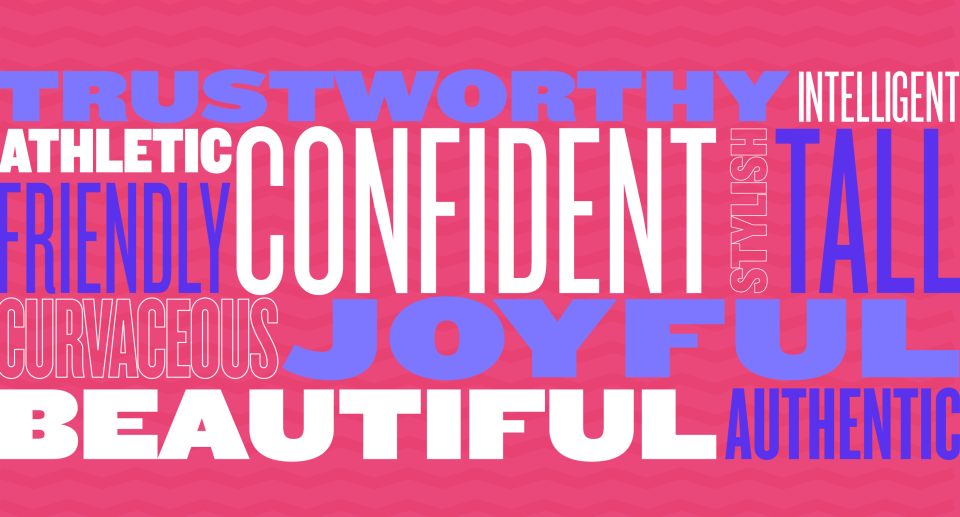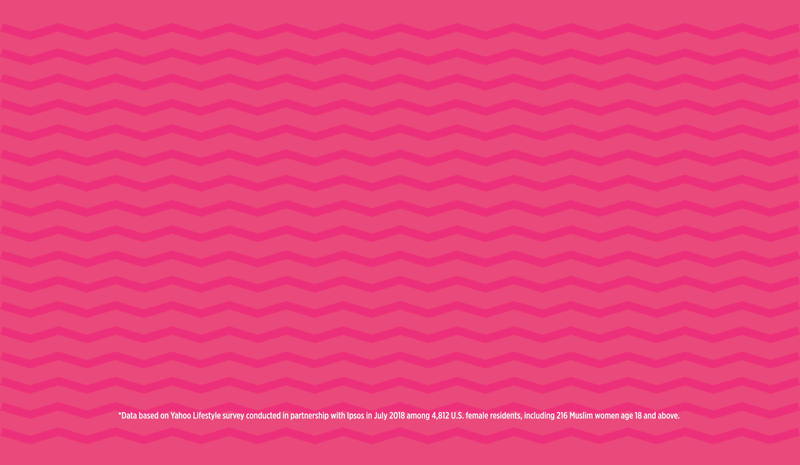92 percent of Muslim-American women say they're beautiful, but 76 percent feel judged, our survey says
“American Beauty” is a new series in which Yahoo Lifestyle takes a virtual cross-country journey to discover what beauty means — reimagining the American flag through the diverse group of faces that make up the United States of America. For our first installment, we’re focusing on Muslim-American women, highlighting what makes this group unique while showcasing the common threads that bring us together.
Here at Yahoo Lifestyle, we proactively engage in conversations about diversity and inclusion, especially those that center on fashion and beauty standards. So we asked seven Muslim-American women, including HuffPost reporter Rowaida Abdelaziz, digital content creator and model Aysha Sow, and Women of Kuwait photographer Maha Alasaker, how they express their faith and culture through personal style. Some people may be shocked to learn that wearing a hijab is not mandatory for every Muslim woman, nor does it define how religious she may be.
We also conducted a survey in July 2018 among 4,812 female U.S. residents age 18 and above, including 216 Muslim women, on American women’s beauty habits and attitudes — and they had a mosaic of beliefs when it comes to representation just as colorful as they are.
We asked women to describe their self-image — in one word.

The top three words used for all women were trustworthy, friendly, and intelligent — descriptors not traditionally tied to physical appearance.
Ninety-two percent of Muslim women call themselves “beautiful.”
It was certainly empowering to uncover that Muslim-American women have such a strong self-image — and this confidence was seen across age ranges, with Muslim millennials registering at 91 percent, and Gen X-ers and baby boomers at 92 percent. This is markedly higher than the general population of women, of which 78 percent considers themselves to be beautiful. When it comes to fashion, 86 percent of Muslim-American women describe themselves as stylish, versus 74 percent of the general population.
Muslim women are far more likely to experience religious or racial discrimination.

Survey results revealed the harsh reality that three-fourths of Muslim women feel they are being judged for the way they dress, in comparison with just over half of the general female population.
Yet, this hasn’t discouraged Muslim-Americans from using clothing and makeup to express their cultural and religious beliefs — two traits that are deeply connected to their sense of being unique. It also supports the financial boost we’ve seen in the modest fashion and halal beauty industries.
A recent Thomson Reuters State of the Global Islamic Economy Report estimated that in 2015 revenues from modest fashion clothing purchased by Muslim women globally was $44 billion. The report projected that spending on modest clothing globally will reach $368 billion by 2021.

Meanwhile, U.S.-based market and research consulting company Grand View Research published a study that revealed in 2015 the global halal cosmetic market was valued at about $16.3 billion and predicted that it will reach $52 billion by 2025.
Muslims place more importance on the way they dress, their physical fitness, and skin care than the general population.
On a monthly basis, 58 percent of Muslim-American women purchase new clothing (compared to 39 percent of the general population), 47 percent buy makeup (compared to 30 percent of the general population), and 45 percent spend money on skin care products (vs. 31 percent of the general population). Self-care among Muslim-American women is a priority too. Twenty-two percent get massages, 27 percent treat themselves to facials, and 14 percent visit a dermatologist monthly. That was much higher than the general population, which clocked in at nine percent for monthly massages and facials, and five percent for dermatology visits.
Mascara is the top makeup product among Muslim-American women, with 36 percent saying it’s their must-have.
Even though hijabis may be fashion’s latest darlings, 43 percent of Muslim-American women consider the industry to be biased.
Muslim beauty blogger Nura Afia has fronted makeup ads. Model Halima Aden struts on international catwalks and poses for glossy magazine covers. Olympic fencer Ibtihaj Muhammad even has a Barbie designed in her likeness. While it is certainly uplifting and inspiring to see these diverse images, 75 percent said they fear appropriation of Muslim culture by the mainstream. It’s a slippery slope when brands tap hijabi women for campaigns, especially as consumers contest their authenticity, or non-Muslim individuals appropriate these styles without considering the consequences.
61 percent of Muslim women say they feel the representation they receive in the media is not enough.

And two out of three think Muslim women are underrepresented — especially in politics, business, and advertising.
Overall, our survey highlighted the complexities not only of how the general population of women in America perceive themselves, but also of the uniqueness of Muslim-American women, as illustrated in their own words.
The overwhelming pressure to conform to unrealistic standards of beauty may still exist. However, it’s clear that many women are taking control of their self-image.
Read more on Muslim-American women in our American Beauty package:
Hijabis may be fashion’s latest darling, but 76% of Muslim-American women still feel judged
9 halal beauty brands that prove the Muslim beauty industry is booming


